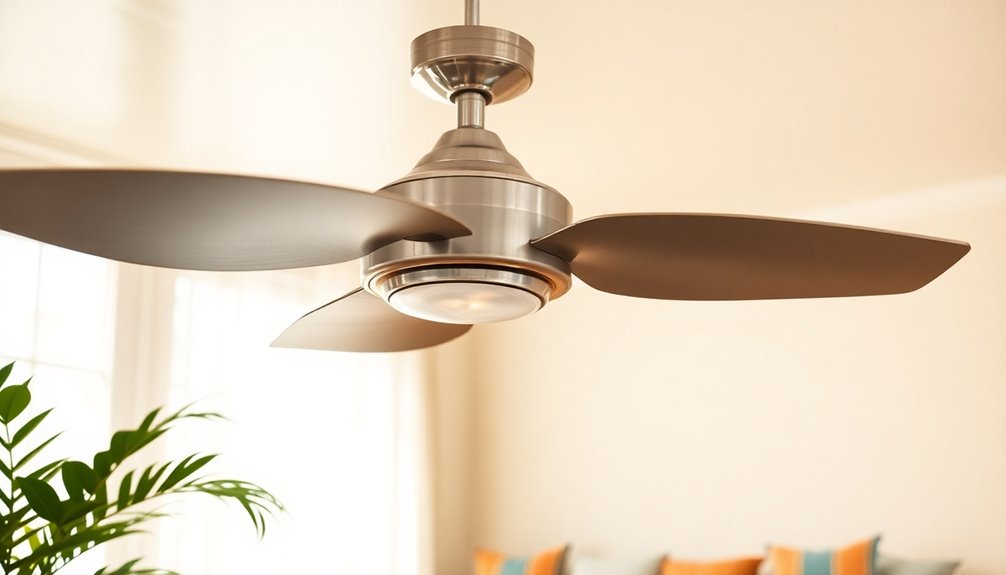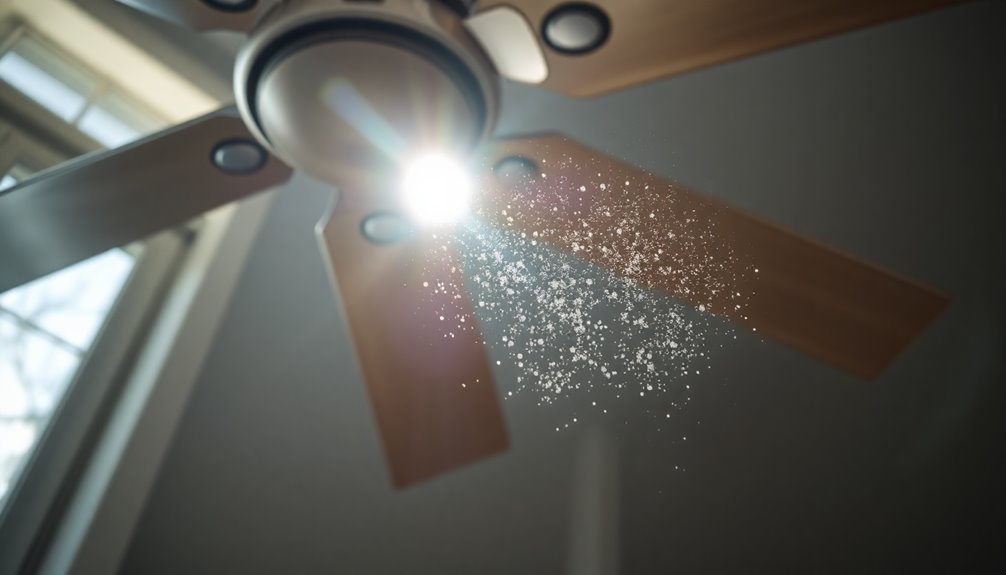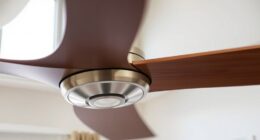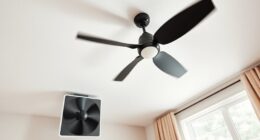To integrate ceiling fans with your smart home system, start by choosing WiFi-enabled fans compatible with platforms like Alexa, Google Home, or Apple HomeKit. Connect them to your WiFi, then use the dedicated app to set up control options, schedules, or automate routines. Make sure your network is stable, and follow manufacturer instructions for wiring and pairing. For more detailed steps and tips, keep exploring how to smoothly connect your ceiling fans to your smart ecosystem.
Key Takeaways
- Confirm fan compatibility with your smart home platform (Alexa, Google Home, Apple HomeKit).
- Connect the fan to a stable 2.4 GHz WiFi network using the manufacturer’s app.
- Follow setup instructions to pair the fan with your smart hub or voice assistant.
- Assign automation routines for scheduling, temperature, or occupancy-based control.
- Regularly update device firmware and ensure strong WiFi signals for reliable integration.
Understanding Smart Home Technology and Ceiling Fans
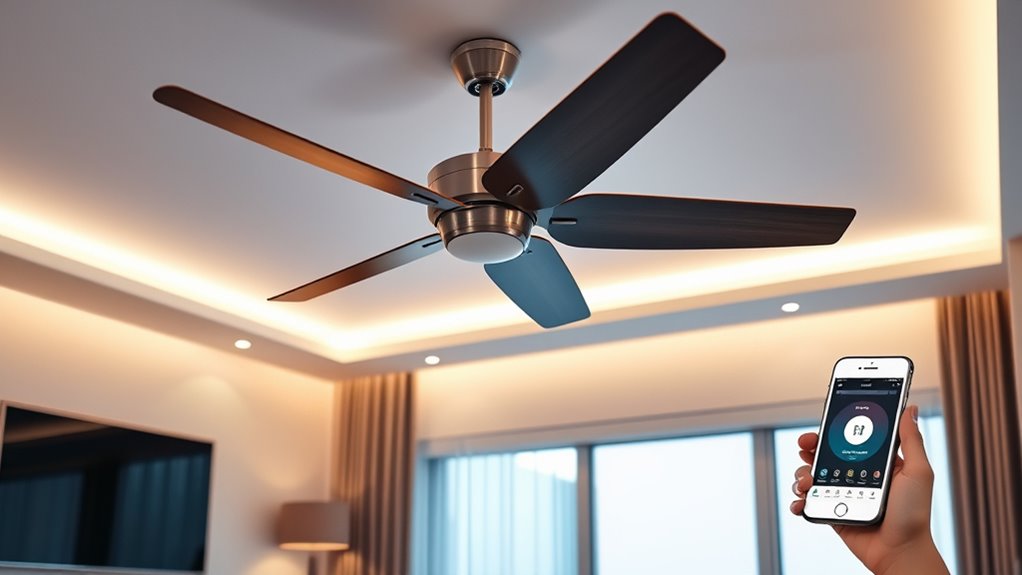
Understanding smart home technology and ceiling fans is key to making your home more efficient and convenient. Modern smart ceiling fans connect through WiFi enabled features, allowing seamless integration with your smart system.
Smart ceiling fans use WiFi to seamlessly connect and enhance your home’s convenience and efficiency.
With app control and voice control options, you can operate your fans remotely or with simple commands. Automation features enable your ceiling fans to adjust based on room temperature, schedule, or occupancy, boosting energy efficiency.
Compatibility with platforms like Alexa, Google Home, or Apple HomeKit ensures smooth control across various smart devices. These advanced fans often include dimmable LED lights and adjustable speeds, giving you personalized comfort.
Embracing smart home technology transforms your ceiling fans into intelligent devices that enhance convenience, save energy, and integrate effortlessly into your connected home ecosystem.
Benefits of Linking Ceiling Fans to Smart Home Ecosystems
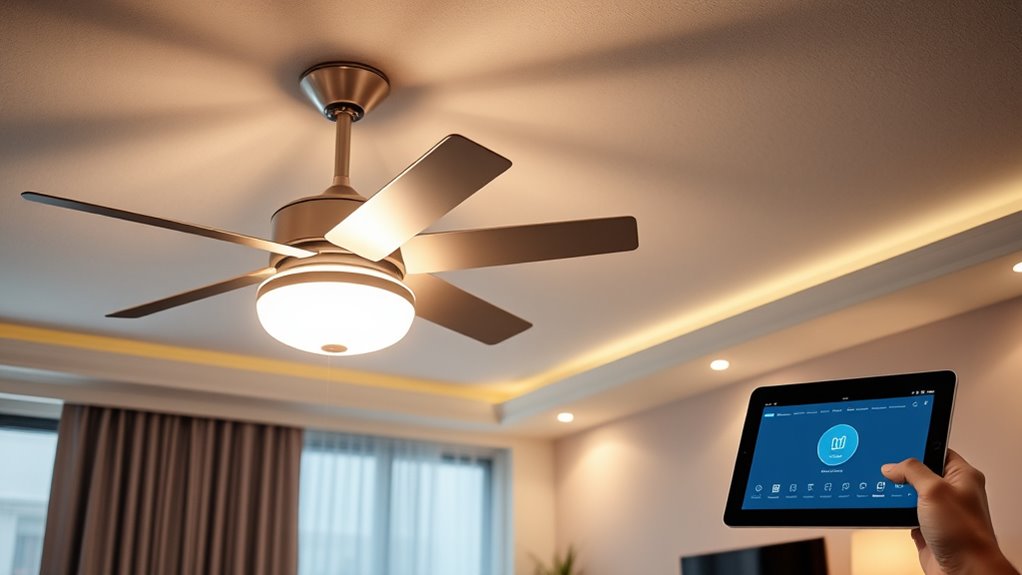
Linking ceiling fans to your smart home ecosystem offers numerous benefits that enhance both convenience and efficiency. With smart home integration, you can control your fan through remote control, voice commands, or automation routines, making adjustments effortless. Device synchronization allows your ceiling fan to work seamlessly with lights, thermostats, and sensors, creating a cohesive environment. Scheduled operation lets you set on/off times, while sensor-based adjustments automatically optimize airflow based on occupancy or temperature changes, improving home comfort. Additionally, smart fans often feature dimmable lighting and adjustable speeds, reducing manual adjustments. This integration also promotes mental wellbeing by reducing stress associated with manual controls and fostering a more organized living space. Incorporating energy-efficient devices like smart fans helps you save energy through optimized operation and provides a more comfortable, streamlined living space, all while simplifying control and enhancing your home’s sustainability. Furthermore, integrating smart fans can improve privacy and security by enabling remote control and monitoring capabilities, giving you peace of mind when you’re away. For example, utilizing smart home automation can further streamline climate control and energy savings. Leveraging advanced connectivity ensures your smart fan remains compatible with evolving smart home technologies and standards.
Connecting Dan’S Fan City Products With Your Smart System
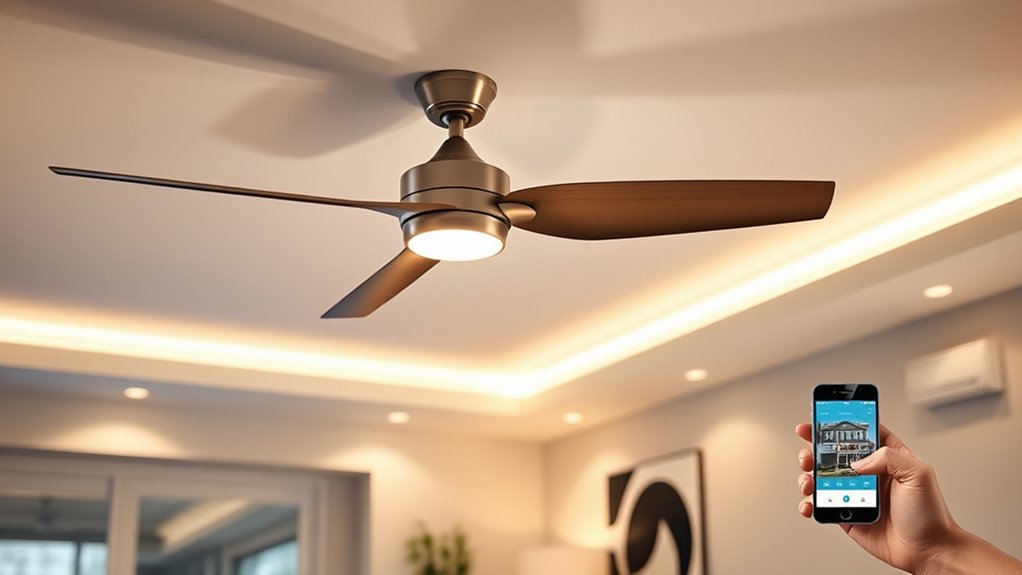
Connecting Dan’s Fan City Wi-Fi-enabled ceiling fans to your smart home system is straightforward when you follow these key steps. First, confirm your fan is connected to your Wi-Fi network, preferably on a 2.4 GHz band, as most smart fans don’t support 5 GHz.
Use the manufacturer’s SmartLife app to connect the fan, following on-screen instructions for proper wiring and mounting. Once set up, check compatibility with your smart hub or voice assistant—like Alexa, Google Home, or Apple HomeKit—to enable voice commands and automation routines. Proper routing of your Wi-Fi network and installing software updates regularly help maintain reliable operation. A stable Wi-Fi connection is essential for seamless integration. Ensuring your network is properly secured can help prevent unauthorized access to your devices. Additionally, maintaining a strong Wi-Fi signal helps prevent disconnection issues that could disrupt your smart system’s functionality.
With your fan integrated, you can control it remotely, set schedules, and enjoy seamless connectivity within your smart home ecosystem. Incorporating AI-powered automation can further enhance your control and efficiency.
Tips for a Smooth Smart Home Integration Process
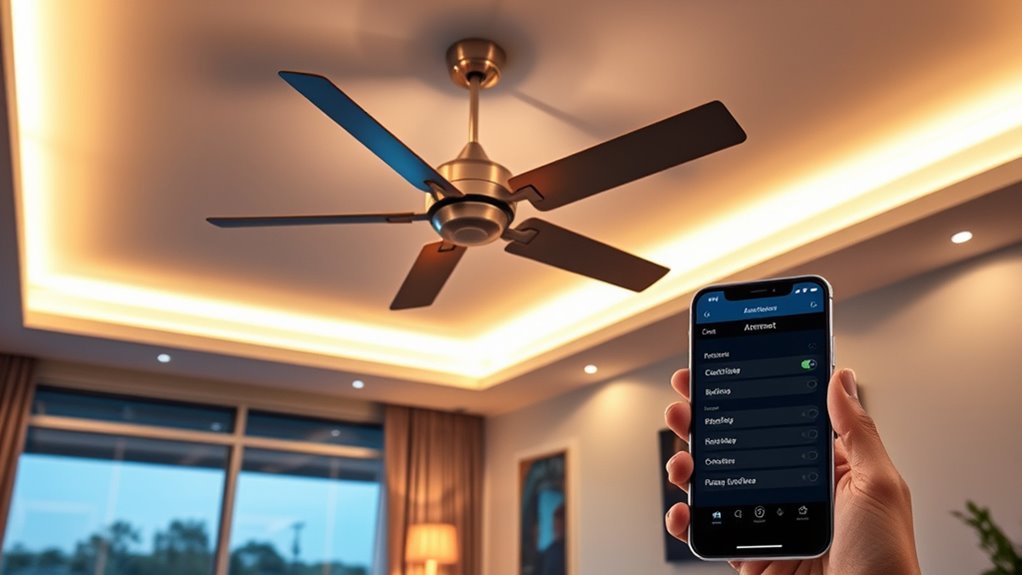
Achieving a smooth smart home integration starts with guaranteeing your Wi-Fi network is optimized for reliable device connectivity. Use a stable 2.4 GHz band, as most smart ceiling fans don’t support 5 GHz networks.
Ensure your Wi-Fi is optimized with a stable 2.4 GHz band for reliable smart ceiling fan connectivity.
Verify compatibility between your fan and your smart home platform—whether Alexa, Google Home, or Apple HomeKit—before installation. Keep firmware updates current for your smart hub and fan to improve connection stability and performance. Ensuring proper network configuration can prevent many common connectivity issues.
It’s helpful to assign separate network names for your 2.4 GHz and 5 GHz bands, making device management easier. Regularly check the signal strength at the fan’s location to prevent connection issues. Being aware of support hours can also help when troubleshooting connectivity problems with customer service if needed.
A strong, consistent network ensures seamless control, reduces disruptions, and simplifies the entire smart home integration process. Additionally, understanding Cookies and Privacy considerations can enhance your overall user experience and ensure your privacy preferences are respected during setup.
Installing and Configuring Smart Ceiling Fans Step-by-Step

Before you begin installing your smart ceiling fan, make certain the power is turned off at the circuit breaker to avoid electrical hazards. Remove the existing fan and ensure the ceiling box is rated for fan installation. It is also advisable to check the wire connections for proper configuration and safety. Attach the mounting bracket to the ceiling, then assemble and wire your Wi-Fi enabled smart ceiling fan—connecting black to black, white to white, and green to ground. Securely mount the fan, double-checking all wiring and screws. Restoring power and connecting the fan to the app, following the manufacturer’s instructions to put it into pairing mode, is a critical step. Once connected to your Wi-Fi network, complete the setup within the app, customize fan control, lighting, and preferences, and link it to your voice assistant or smart home devices. Additionally, understanding the concept of angel number soulmates can help you recognize meaningful connections and enhance your overall smart home experience. Incorporating innovative smart home features can further optimize your setup for energy efficiency and convenience. Exploring AI security measures can help safeguard your connected devices against vulnerabilities, ensuring a safer smart home environment. This process guarantees seamless home automation and energy savings.
Frequently Asked Questions
Do Smart Switches Work With Ceiling Fans?
You ask if smart switches work with ceiling fans, and the answer is yes, but with conditions. You need a switch rated for fans, not just lights, to avoid issues like flickering or motor damage.
Make sure the switch is compatible with your fan’s load and connect it to your smart home system via Wi-Fi or Z-Wave. Proper selection guarantees seamless remote or voice control without risking your fan’s performance.
Can You Make Ceiling Fans Smart?
You can definitely make ceiling fans smart. By adding Wi-Fi modules or smart switches, you transform your traditional fan into a connected device.
Whether you retrofit an existing fan with RF or IR modules or buy one with built-in smart features, the process involves connecting to a smart hub, app, or voice assistant.
With proper wiring, compatible hardware, and a stable Wi-Fi network, you’ll enjoy remote control, automation, and voice commands.
How Do I Pair My Remote to My Ceiling Fan?
You’re wondering how to pair your remote to your ceiling fan. First, make certain the batteries are fresh and the remote is within range.
Usually, you press and hold a specific button on both the remote and fan receiver until a flashing light confirms connection.
If that doesn’t work, check your fan’s manual for model-specific instructions.
Can I Connect My Ceiling Fan to Alexa?
Yes, you can connect your ceiling fan to Alexa. If your fan is compatible, you can pair it directly through a smart fan hub or connect it with a smart switch that works with Alexa.
Some fans connect via Wi-Fi and use the manufacturer’s app for setup. Once connected, you can control your fan with voice commands like “Alexa, turn on the fan” or “set fan to medium speed,” making your smart home more convenient.
Conclusion
Integrating your ceiling fan with a smart home system can boost comfort and energy savings. Did you know that smart home devices can reduce energy costs by up to 30%? By following these steps, you’ll enjoy seamless control and added convenience. With over 60% of homeowners adopting smart technology, now’s the perfect time to upgrade your ceiling fan. Embrace the future of home automation and enjoy smarter, more efficient living today.



